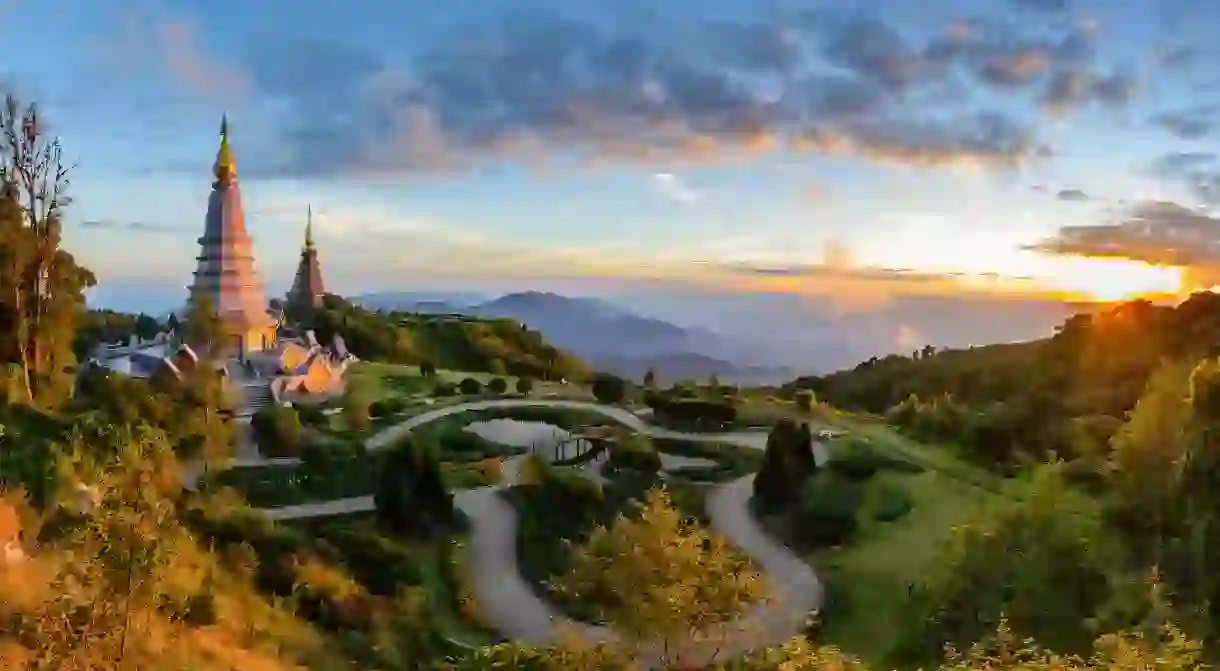How to Spend Two Weeks in Northern Thailand

Take the stress out of planning by checking out our handy guide on how to make the most of two weeks in magical Northern Thailand. You’ll experience lush nature, diverse culture, delicious cuisine and more.
Want to visit Thailand without having to plan your own itinerary? Consider joining Culture Trip’s specially curated small-group trip to Northern Thailand.
Day 1 & 2: Chiang Mai
Chiang Mai is arguably the most popular destination in Northern Thailand, a hub for both foodies and artists. It’s easy to spend a few days (or a few weeks) here with plenty of interesting sightseeing opportunities and activities. Must-see sights in this charming city include the revered Wat Phra That Doi Suthep, which provides breathtaking views over the city, Wat Chang Man (the oldest temple in the city) and a visit to some of the popular markets in the area. Wander around the old city, treat yourself to a luxurious spa treatment or partake in a hands-on cooking class.

Day 3: Chiang Dao
Chiang Dao is a nature lover’s haven ideal for both hiking and relaxing. It’s also home to the famous Chiang Dao caves, natural hot springs and the enchanting Wat Tham Pha Plong.

Day 4 & 5: Pai
Continue on to the hippie jungle paradise of Pai, a stunning town nestled in the mountains. There is ample opportunity for relaxing, exploring and eating here. It’s also a popular destination for yoga and meditation retreats as well as a health-conscious haven. Looking for a place to party? This town has a dual identity that mimics the vibe of a Thai island, only it’s in the jungle.

Day 6: Mae Hong Son
In Mae Hong Son, there are plenty of things to see and do. Check out the beautiful Wat Phra That Doi Kong Mu, which overlooks the town, watch locals practise tai chi around Jong Kham Lake and visit the Walking Street Night Market. Have dinner at the Salween River Restaurant followed by a few drinks at one of the nearby bars.

Day 7: Ban Rak Thai
Jump on a motorbike and enjoy the beautiful ride to the town of Ban Rak Thai. It’s the perfect out-of-town adventure – a stunning tea-growing village and settlement of former Kuo Min Tang fighters from Yunnan Province in China. It’s home to a picturesque lake, mud-brick houses and plenty of tea-tasting opportunities.

Day 8 & 9: Chiang Rai
Chiang Rai is most famous for attractions such as the White Temple and the Black House, but did you know that it is also a great place to check out the thriving local art scene and try delicious local foods? There are also a host of fun activities to do, such as soaking in the Pong Phra Bat Hot Springs.

Day 10: Doi Mae Salong
For a truly stunning experience, head out of Chiang Rai and north to Doi Mae Salong, in the mountains in Chiang Rai Province and close to the border of Myanmar. The mountain was home to a Chinese military division settlement; today, numerous hill tribe communities still call the area home. For the optimal experience, hire a motorbike and drive the stunningly beautiful Highway 1234. Mae Salong village offers stunning nature, tea-tasting opportunities and the chance to immerse oneself in rural village life.

Day 11 & 12: Golden Triangle and Chiang Saen
The Golden Triangle is a popular tourist destination where Thailand, Myanmar and Laos converge. Escape the crowds and head to Chiang Saen, the oldest town in Thailand. Travel back in time as you learn about the country’s rich history, sit on the banks of the mighty Mekong River and mingle with locals in the evening market.

Day 13: Nan
Experience authentic Northern Thailand in rural Nan. Stop by the Blessing Buddha at Wat Phra That Khao Noi, discover the Nan Riverside Art Gallery or marvel at the vegetable-dyed frescos at Wat Phumin. If you are in search of an active adventure, head to Doi Phu Kha National Park to see rare plant species and rock formations.

Day 14: Phrae
End your Northern Thai adventure in Phrae, home to the famed Phae Mueang Phi Forest Park and the indigo-dyed textile village of Ban Thung Hong. Wat Luang is the oldest and one of the most revered temples in Phrae, dating back to the 12th century, and well worth checking out. Also of interest to see is the Thai and European architecture mix at Khum Chao Luang Museum.














